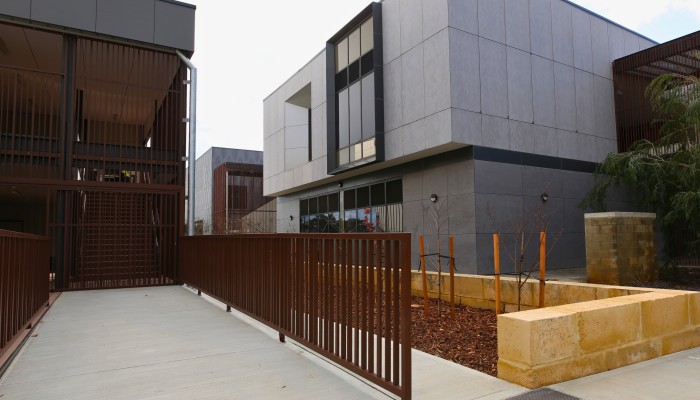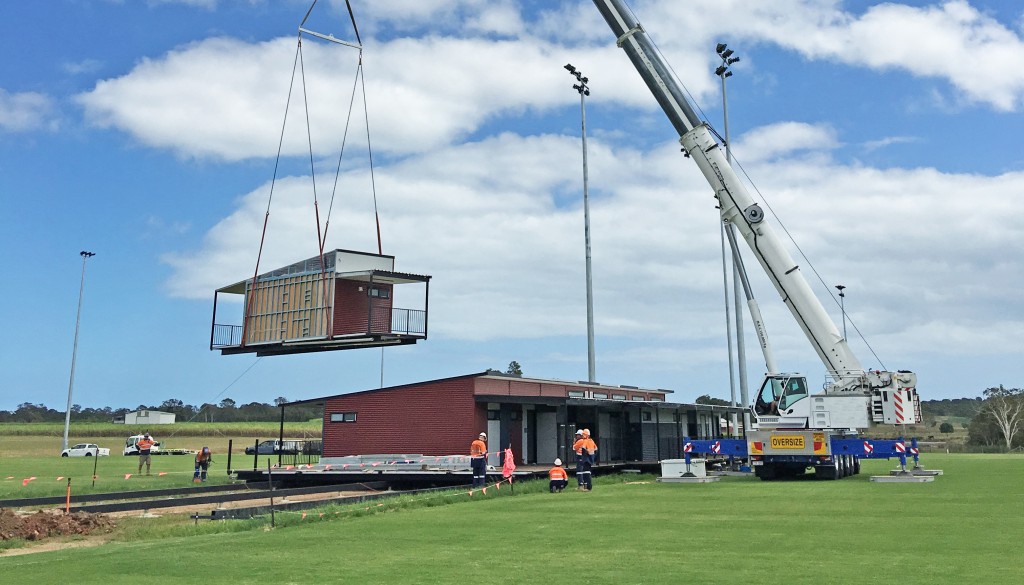
The Top 10 Questions You Have Always Wanted to Ask About Modular Buildings
Modular construction is a game-changer, but it's also a topic with a lot of misconceptions. From what they are to how long they last and what they're made of, people have a lot of questions about modular buildings. We're here to give you the real answers to the top ten questions you've always wanted to ask about all things modular.
1. Is a modular building a donga or is that something different?
Unless you’ve been living under a rock, you would have heard this Aussie colloquial before. The term ‘donga’ is typically used to describe a basic, single-room accommodation unit, often found on remote mining site camps. These are usually very simple, functional structures designed for temporary use and are a very specific type of modular building.
A modern modular building, however, is a much broader category. It refers to any building constructed offsite, in sections or modules, which are then transported and assembled on-site. Modular buildings can be single-story classrooms, multi-story office blocks, healthcare facilities, or even sporting changeroom and clubhouse facilities. They can be temporary or permanent and designed to a level of architectural sophistication that's indistinguishable from traditional construction.
So, while a donga is a modular building, a modular building is not just a donga.
2. Are modular buildings cheap and nasty?
The cheap and nasty stereotype is a holdover from the past, when modular buildings were primarily used for temporary, no-frills applications. Today, Modern Methods of Construction (MMC) prove the quality of a modular building can be as high, or even higher, than that of a traditional site-built structure. This is because modular buildings are manufactured in a controlled factory environment, which eliminates issues like weather damage, theft, and delays.
The Design for Manufacture and Assembly (DfMA) process is governed by strict quality control protocols leading to a building that can be built with the same high-quality materials and finishes you'd find in any conventional construction project. You can have everything from custom facades and high-end interiors to advanced technology integrations.
3. Do I need a flat site to accommodate a modular building?
While a flat site makes the installation process a bit easier for any construction project, it's not a strict requirement for modular. Modular buildings can be installed on a wide variety of terrains, from steep slopes to uneven ground. The key is proper site preparation. The modular nature of the building doesn't change the need for a stable base; it simply allows the building to be installed more quickly once the site is ready. Your local Ausco contact can provide further insights when assessing your site for a modular building.
4. How does the building get to site?
The journey from the factory to site is often an exciting milestone for our customers. Once the modules are constructed, they are carefully loaded onto trucks and transported to the destination, where a crane is used to lift each module into place. The modules are then carefully lowered onto the prepared foundation and connected to each other. This method significantly reduces the time required for on-site construction, as the majority of the work has already been completed in the factory.

5. Can I move it myself?
No, you can't just move a modular building on your own. Relocating a modular building is a specialised process that requires specific experience, equipment, and permits. The process involves a team of professionals who can safely disconnect the services, carefully separate the modules, load them onto trucks, and then re-install them at the new location, ensuring the building's structural integrity remains intact. This is a huge benefit of modular buildings—their reusability and potential for relocation—but it's a job for the experts, not a DIY project.
6. How long do modular buildings last?
The lifespan of a modular building is a common query we receive. A well-designed and properly maintained permanent modular building can last just as long as, or even longer than, a traditional site-built structure. Many are designed to last for 30, 40, or even 50+ years. The durability is built-in during the manufacturing process, where they are constructed to withstand the rigours of transportation. High-quality, durable materials are used to often build to exceed standard building codes.
7. Is it noisy inside a modular building?
Today's modular buildings are engineered to be quiet. Modern construction techniques, including advanced acoustic insulation, make them exceptionally good at dampening both internal and external noise. This focus on sound insulation ensures that the indoor environment is quiet and comfortable, whether it’s a school classroom, a medical clinic, or a corporate office.
8. Is it hot in summer and cold in winter?
Just like their site-built counterparts, modern modular buildings are designed to be energy-efficient and comfortable year-round whether buildings are temporary in nature or permanently installed on-site. They feature high-quality insulation in the walls, floors, and ceilings to prevent heat loss in winter and heat gain in summer.
9. Can I customise the design?
Absolutely. Depending on your site, timelines and budget, modular can offer a high degree of design flexibility and customisation. They can be built to match existing architectural styles or to create a unique, modern look. The modular nature allows for custom configurations that can be scaled up or down, making them suitable for everything from a small office to a large, multi-building workforce accommodation camp.
10. Are modular buildings eco-friendly?
Yes, modular buildings are an excellent choice for sustainable construction. The off-site construction process significantly reduces material waste because unused materials can be recycled and reused in the factory. Furthermore, the ability to relocate and reuse modular buildings gives them a longer, more sustainable life cycle, making them a very eco-friendly choice.
Modular buildings have come a long way in recent years. They are no longer just the simple, temporary structures of the past. Instead, they are a fast, high-quality, and sustainable solution for a wide range of building needs. Hopefully, these answers have helped you see the true potential of modular construction.


